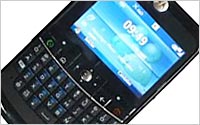NFC Adoption Rates Rising In Advertising, Marketing
- by Laurie Sullivan @lauriesullivan, February 1, 2012
 Expect approximately 100 million
near field communication-enabled (NFC) smartphones to ship in 2012. The forecast released by VDC Research suggests that consumer demand will create a "pull" effect for hardware manufacturers and
application developers, as more brands attempt to influence buying decisions from mobile devices that can read the contactless chips and software driving the transaction or event.
Expect approximately 100 million
near field communication-enabled (NFC) smartphones to ship in 2012. The forecast released by VDC Research suggests that consumer demand will create a "pull" effect for hardware manufacturers and
application developers, as more brands attempt to influence buying decisions from mobile devices that can read the contactless chips and software driving the transaction or event.
Michael Liard, VDC research director of automatic identification technologies, has been tracking the use of NFC by companies and universities for years, long before mobile wallets were available.
Screen resolutions in Japan have increased in quality; consumers can now scan a barcode off computers, Liard said, suggesting that applications will soon provide similar services based on NFC. "When you talk about search marketing, it's really just about delivering a URL tied to content," he said. "It's something we're monitoring, but haven't really seen."
Arizona State has piloted the technology to secure campus residence halls and rooms, while TNT deployed the technology in a New York storefront to drive an interactive TV ad campaign. Aside from adoption by brands for advertising or transportation companies and restaurants, Nokia launched a NFC-enabled mobile game for Symbian handsets.
Plus, the MasterCard, Commonwealth Bank and Hoyts QkR pilot trial in Sydney will enable peer-to-peer payments through smartphones through MasterCard PayPass for retail checkout at these types of venues.
The use of NFC in smartphones and tablets has been growing among brands. Near term in the United States, Liard expects to see transportation, hospitality and retail payment services to lead in NFC application adoption. Closed-loop applications -- those that do not require multiple technology partners -- will become most prevalent in coming year.
While the Americas lag in NFC adoption, largely due to a limited number of devices with the technology, Asia-Pacific leads in demand. This market comprises countries that can support a major contactless infrastructure for a variety of applications, including advertising. In Japan, Jiepang window stickers enable consumers to check in at about 3,000 participating merchants to earn rewards.
Businesses will also increase investments in NFC for internal use, according to the report. Initiatives, such as Google Wallet, will continue to influence developers to create more mobile applications with short-range radio frequency capability. The emergence of alternative devices in a variety of forms will also broaden the use. And government investments in countries outside the U.S. will help drive adoption.


